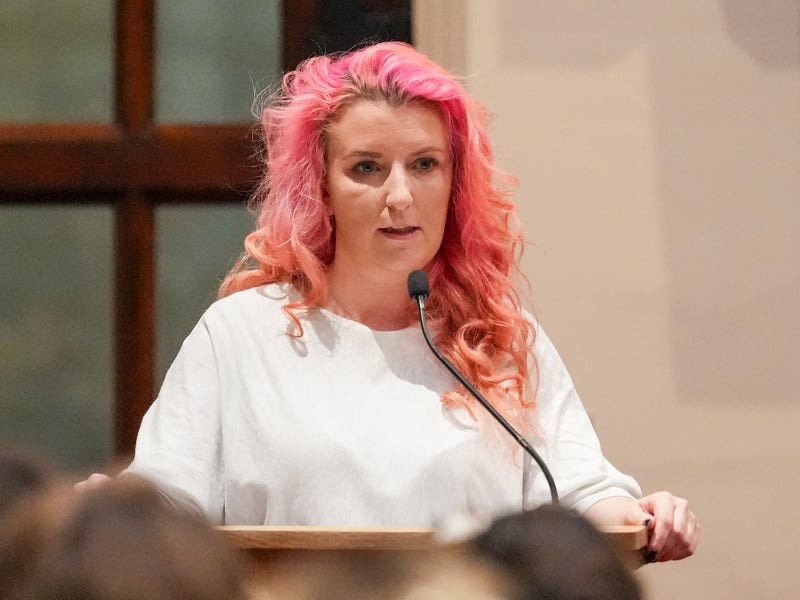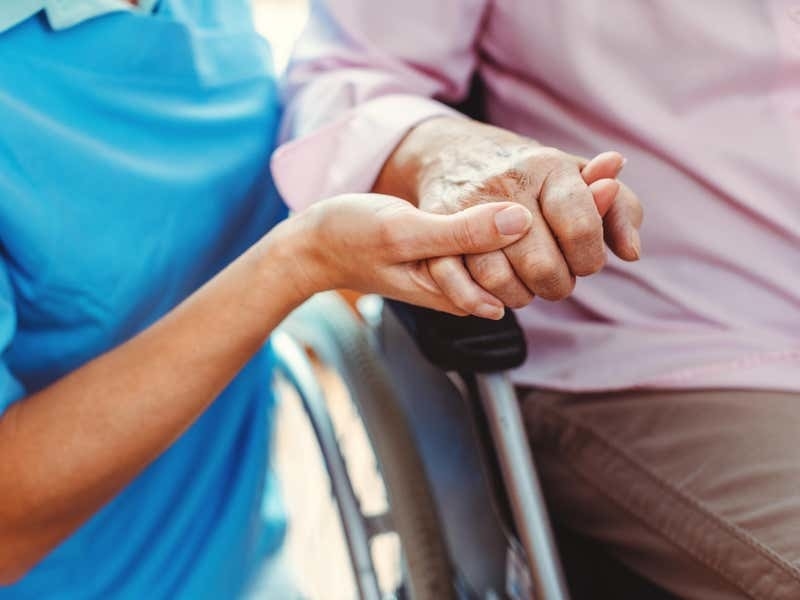The inscription on the monument is in French. Translated, it reads: ‘To the memory of Miss Marie Mauger – widow of Mr Francis Bartlett – foundress of the General Hospital. Buried in this parish April 26 1741. She stretched out her hands to the poor, she reached forth her hands to the needy – Proverbs 31, 20.’
Her altruism gave Jersey its first hospital on the site of the present building.
Marie Bartlett was born in St Brelade in 1677. The daughter of Captain Jean Mauger, she married an English merchant, Francis Bartlett, in September 1704 and the newly-weds settled in St Aubin – which was then Jersey’s main port.
Poor standards of hygiene and sanitation at the time made the town of St Helier in particular a very unhealthy place to live, while the lot of the poor, infirm and elderly was even more precarious.
During the 16th and 17th centuries, those who could not fend for themselves were housed in an ancient disused chapel, La Madelaine, which was located in the north-west corner of the Town Church yard.
When it fell into irrevocable disrepair, the poor were housed in a building in Seale Street, but this also became unfit for purpose. Around the same time, Mrs Bartlett was enjoying a comfortable existence as wife of one of the Island’s most successful merchants.
The marriage lasted 30 years but it was childless. When Francis died in October 1734, Mrs Bartlett inherited his fortune and spirits import business. Taking the reins she used her acumen to make the business even more successful.
Mrs Bartlett was undoubtedly a spirited character, who was not afraid to stand up for her rights at a time when women were rarely involved in commerce. When she died in 1741 her fortune, including investments in England, came to 91,567 livres tournois – equivalent to £7 million in today’s money. In her will she stipulated that her money was to be used to help
the orphans, destitute widows and the elderly.
She made a number of personal bequests and gave money to the parishes to look after the poor, but the bulk of her estate – 50,000 livres tournois – was earmarked for the States to build a poorhouse and hospital in St Aubin.
However, her wishes were frustrated by the poor composition and spelling of her final testament, which led to delays and much legal wrangling. To complicate matters further, relatives contested the will.
This extract, that eventually led to the Island having its first hospital, shows the problems her executors faced in fulfilling her wishes to provide the Island with a hospital and poor house:
‘I bequathe to the poore of Jersey on honder livers Franche money to iche parihe to be distributed after my buriale: i give morear to the poore of the ilande fifteay thousent livers turnois, taigne thousent to build them a house and forty thousent to beay a reivenu to mantaigne the poore that shall be pouite in the house, wiche shall be poore widows and fatherlaise childrane and enchant piple of the ilande, and shale alwaise be quipe foule; and shale the saide souse be built in St. tobins, and everything be ordred as my execrs hear after named and the Staites of the Iland shall judge Fiting.’
By 1744 the issues had been resolved and in the following year the States formed a committee to look for a suitable site in St Aubin.
The search for a site proved fruitless and when the Seigneur of Mèleches, Philip Baudinel, offered land on sand dunes to the west of the town, the committee decided to recommend the hospital and poor house be built there. As the town and St Helier Harbour was growing in prominence over St Aubin, the land in what is now Gloucester Street was deemed to be the best place for the building.
However, the executors of Mrs Bartlett’s will tried to implement her wish that the poor house be built in St Aubin, but with no success.
Work began in 1765, 24 years after her death, and the first people were admitted in 1772, but seven years later the building was commandeered by the British Army as a garrison for troops stationed in the Island, at a time when Jersey was heavily defended.
Disaster struck in 1783 when an explosion, caused by improperly stored gunpowder, destroyed two-thirds of the structure. It took the States five years to get compensation from the military, and a further five years to reconstruct the building.
Finally, in 1793, more than 50 years after her death, Mrs Bartlett’s dream finally became reality and the old building of the General Hospital opened its doors. Until 15 years ago, portraits of Mr and Mrs Bartlett hung in the Hospital’s original entrance.
In a minor, lasting memorial to her altruism, Mrs Bartlett’s name still heads the long list of benefactors whose generosity has funded the Island’s health service from the 18th century to today.






